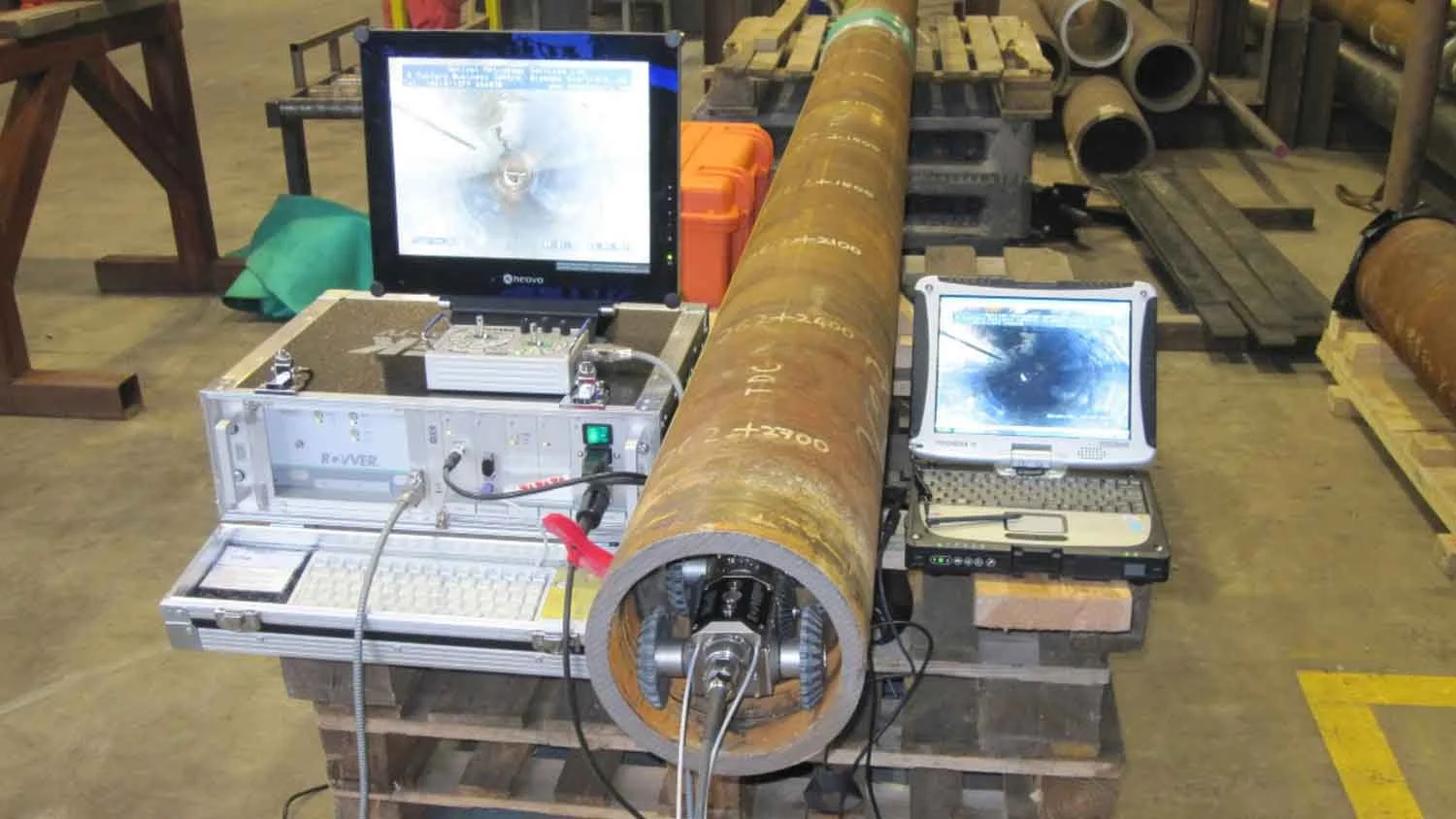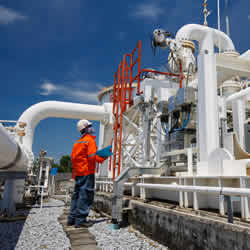Pipeline Welding Inspection: Ensuring Safety and High Quality in Every Weld
Pipeline Welding Inspection: Ensuring Safety and High Quality in Every Weld
Blog Article
Comprehensive Overview to Pipe Welding Inspection: Ensuring Honesty and Security in Pipe Building And Construction and Upkeep
The stability and safety of pipes are critical in today's facilities landscape, underscoring the critical function of welding evaluation in pipe building and maintenance. A detailed guide on this subject not just highlights the necessity of analyzing weld high quality yet likewise resolves the different inspection methods readily available, such as radiographic and ultrasonic screening. By recognizing common flaws and their implications, stakeholders can apply finest practices that ensure conformity and longevity. Nonetheless, the complexities entailed in welding evaluation raising pertinent inquiries regarding sector standards and the developing innovations that may redefine these techniques.

Value of Welding Assessment
Welding examination plays a critical function in making sure the stability and security of pipeline systems. It functions as a basic procedure that confirms the high quality and dependability of welded joints, which are often one of the most weak spots in pipe building and construction. Through organized examination, assessors can determine prospective defects such as cracks, porosity, and incomplete fusion, which might jeopardize the structural integrity of the pipeline.
The relevance of welding evaluation expands beyond plain compliance with market standards; it likewise safeguards public wellness and the environment. Detailed inspections can boost the longevity of pipeline systems, lowering the need for expensive repair work and downtime.
In enhancement to making certain safety and compliance, welding inspection promotes a society of top quality assurance within organizations. By focusing on inspection throughout the welding process, business can develop a reputation for reliability and quality, inevitably leading to increased consumer confidence and service chances (Pipeline Welding Inspection). Hence, the relevance of welding inspection can not be overstated in the context of pipeline building and maintenance
Secret Welding Procedures
Various welding procedures are used in pipe construction, each with its own advantages and applications. Among the most widely utilized techniques are Protected Metal Arc Welding (SMAW), Gas Tungsten Arc Welding (GTAW), and Gas Metal Arc Welding (GMAW) SMAW is favored for its convenience and capacity to execute well in numerous ecological conditions, making it suitable for field applications.
GTAW, frequently referred to as Tungsten Inert Gas (TIG) welding, is recognized for its ability to produce top quality welds with outstanding control over heat input, making it ideal for thin-walled pipes and stainless steel materials. GMAW, or Steel Inert Gas (MIG) welding, uses high deposition prices and is efficient for large-scale tasks, usually utilized in the construction of pipes in controlled environments.
In Addition, Submerged Arc Welding (SAW) is used for its deep penetration and high performance, specifically in the building of large-diameter pipes. Each of these procedures contributes to the general integrity and safety and security of pipeline constructions, making it possible for welders to select the most proper technique based on product type, task demands, and environmental problems. Comprehending these key welding procedures is essential for efficient pipeline welding assessment.
Common Issues and Their Impact

Porosity, defined by little gas pockets trapped within the weld, a fantastic read damages the product and can result in leaks. Cracks, which may happen due to thermal stresses or inappropriate air conditioning, can circulate and result in structural failing under pressure. Undercutting, where the base steel is deteriorated along the weld bead, reduces the reliable cross-section of the pipe, increasing a knockout post the danger of fracture.
Insufficient fusion takes place when the weld steel does not correctly bond with the base metal, causing weak areas that might fall short under tension. Slag addition, the entrapment of non-metallic product within the weld, can likewise weaken the joint's stability. Determining and resolving these defects early in the building process is critical to making sure the lasting dependability and safety and security of pipeline systems, thus protecting both the framework and the atmosphere.
Examination Strategies and Tools

Aesthetic assessment is the first line of protection, allowing assessors to identify surface area irregularities, imbalance, or various other noticeable issues. Ultrasonic screening employs high-frequency audio waves to spot interior problems, giving precise deepness dimensions and identifying issues without damaging the weld. Radiographic testing makes use of X-rays or gamma rays to produce photos of the weld, enabling the identification of inner gaps, cracks, or additions.
Magnetic bit testing is especially reliable for detecting surface and near-surface interruptions in ferromagnetic products. This method entails using a magnetic area and great iron bits to read the article the weld, exposing problems via the accumulation of particles at imperfection sites.
In addition to these strategies, specialized devices such as automated ultrasonic testing devices and electronic radiography systems enhance inspection precision and performance, guaranteeing a detailed examination of pipeline welds during building and construction and upkeep.
Best Practices for Compliance
Abiding by ideal practices for compliance in pipe welding assessment is crucial for making certain the stability and security of the facilities. Organizations needs to develop a thorough quality administration system that lines up with market requirements such as ASME, API, and AWS. This consists of developing comprehensive welding treatments that specify the materials, methods, and certifications needed for welders.
Normal training and qualification of examination workers are necessary to preserve high proficiency levels. Inspectors need to be acquainted with various non-destructive testing (NDT) methods, including ultrasonic screening, radiographic testing, and visual examination, to properly identify possible flaws.
Documents plays a crucial role in compliance; maintaining exact documents of assessments, weld procedures, and employees certifications helps to make certain traceability and responsibility. Scheduled audits and reviews of welding methods must be performed to identify locations for enhancement and make certain adherence to developed procedures.

Final Thought
In conclusion, the execution of extensive welding examination procedures is paramount for making sure the integrity and safety of pipeline building and construction and maintenance. Constant improvement in assessment procedures will add to the longevity and dependability of pipe systems, underscoring the important role of welding examination in the industry.
The stability and safety and security of pipelines are critical in today's framework landscape, emphasizing the vital duty of welding inspection in pipeline building and upkeep. Comprehending these vital welding procedures is vital for efficient pipe welding assessment.
Sticking to best techniques for compliance in pipe welding examination is important for making certain the honesty and safety of the infrastructure.In final thought, the application of strenuous welding examination methods is paramount for ensuring the stability and security of pipeline building and maintenance. Constant enhancement in assessment procedures will certainly contribute to the durability and reliability of pipe systems, emphasizing the critical duty of welding evaluation in the sector.
Report this page